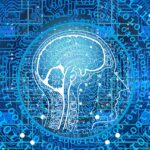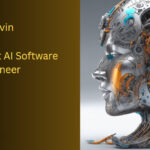A Deep Dive into Large Language Models (LLMs)
Introduction - Artificial Intelligence
Have you ever received an eerily realistic response from a chatbot, or stumbled upon an article that seemed almost human-written? These feats might be the work of Large Language Models (LLMs), a cutting-edge technology revolutionizing how we interact with machines and information.
This blog post delves into the fascinating world of LLMs, exploring their inner workings, their potential applications, and the future they hold.
Table of Contents :
What are Large Language Models (LLMs)?
Imagine a computer program that can not only understand human language but also mimic it with surprising fluency. That’s the essence of an LLM. These are complex AI systems trained on massive amounts of text data, allowing them to grasp intricate patterns and relationships within language.
Here’s a breakdown of the key aspects of LLMs:
- Large: As the name suggests, LLMs are built upon colossal datasets. This data can encompass books, articles, code, webpages, and virtually any form of written text. The sheer volume of information allows the LLM to learn the nuances of human language – grammar, syntax, and even cultural references.
- Deep Learning: LLMs leverage a specific type of artificial intelligence called deep learning. This involves mimicking the structure and function of the human brain through a network of interconnected artificial neurons. These “neural networks” analyze the text data, identifying patterns and relationships between words.
- Transformer Architecture: Many LLMs utilize a specific type of deep learning architecture called a transformer. This technology excels at analyzing long sequences of text and understanding the context within a sentence. By processing the relationships between words, the transformer allows the LLM to grasp the overall meaning of a passage.
What are LLMs Used For?
LLMs are transforming various fields with their ability to process and generate human-like text. Here are some fascinating applications:
- Natural Language Processing (NLP): LLMs excel at NLP tasks like sentiment analysis, where they can gauge the emotional tone of a piece of writing. This can be used for social media monitoring, customer reviews, or even analyzing political speeches.
- Machine Translation: LLMs are pushing the boundaries of machine translation, enabling seamless communication across languages. They can translate text with greater accuracy and nuance, capturing the essence of the original content.
- Chatbots and Virtual Assistants: LLMs are the backbone of sophisticated chatbots that can engage in natural conversations. They can answer customer queries, provide technical support, or even act as virtual companions.
- Content Creation: LLMs can assist with content creation by generating different creative text formats, like poems, scripts, musical pieces, or even email drafts. While they might not replace human writers entirely, they can be a valuable tool for inspiration and brainstorming.
- Code Generation: LLMs are being explored for code generation, where they can translate natural language instructions into actual computer code. This has the potential to streamline the development process and democratize programming for non-coders.
Example: Decoding the Stock Market with LLMs
Imagine an LLM trained on vast amounts of financial news articles, market reports, and analyst opinions. This LLM could be used to:
- Summarize complex financial data: By analyzing mountains of financial text, the LLM could generate concise reports highlighting key trends and insights.
- Identify investment opportunities: The LLM could scan news articles and social media for potential investment leads, looking for positive sentiment towards specific companies.
- Generate automated trading strategies: Based on historical data and market trends, the LLM could propose potential trading strategies, allowing investors to make more informed decisions.
It’s important to remember that LLMs are still under development, and their output might require human oversight and editing. However, the potential applications across various fields are vast and constantly evolving.
How Do LLMs Work?
Understanding the inner workings of LLMs requires a glimpse into the world of deep learning. Here’s a simplified breakdown:
- Data Preprocessing: The massive text data is first cleaned and preprocessed. This involves removing irrelevant information and converting the text into a format the computer can understand, often by replacing words with numerical representations.
- Feeding the Machine: The preprocessed data is then fed into the LLM’s deep learning network. This network consists of multiple layers of interconnected artificial neurons, each processing the data and extracting features.
- Learning from the Text: Through a process called backpropagation, the LLM adjusts the connections between its artificial neurons. As it analyzes the data repeatedly, it learns to recognize patterns and relationships within language.
- Generating Text: Once trained, the LLM can be used to generate text or perform other language tasks. When prompted with a starting phrase or question, the LLM taps into its knowledge base to predict the most likely word that should come next. It considers the context of the prompt, the surrounding words, and its understanding of grammar and syntax to generate a cohesive and meaningful response.
Here’s a further look at the process:
- Probabilistic Prediction: At its core, LLM text generation is probabilistic. The model assigns a probability score to each possible word based on its internal understanding of language. The word with the highest score is chosen, and the process is repeated to build a sequence of words.
- Attention Mechanism: Many LLMs utilize an attention mechanism that allows them to focus on specific parts of the input text when generating a response. This helps them understand the context and nuances of the prompt more effectively.
- Fine-Tuning: LLMs can be further specialized for specific tasks through fine-tuning. This involves training the model on a focused dataset related to the desired task, such as translating medical documents or writing different creative text formats.
AI History: Key Dates and Names
The quest to create intelligent machines has captivated humanity for centuries. Let’s delve into the fascinating history of Artificial Intelligence (AI), highlighting key milestones and the brilliant minds behind them:
Early Influences (Pre-1940s):
- Philosophers and mathematicians pondered the nature of intelligence and the possibility of replicating it in machines.
Birth of AI (1940s – 1950s):
- 1941: Alan Turing, a pioneer in computer science, explores the concept of machine intelligence in a seminal (but lost) paper.
- 1943: Warren McCulloch and Walter Pitts introduce the concept of artificial neural networks, laying the groundwork for machine learning.
- 1950: Alan Turing publishes his groundbreaking paper, “Computing Machinery and Intelligence,” which proposes the Turing Test, a test of a machine’s ability to exhibit intelligent behavior equivalent to, or indistinguishable from, that of a human.
- 1956: John McCarthy, Marvin Minsky, Nathaniel Rochester, and Claude Shannon organize the Dartmouth Workshop, considered the founding event of AI research. The term “artificial intelligence” is coined here.
Early Successes and Challenges (1950s – 1980s):
- Researchers explored various approaches to AI, including symbolic reasoning, expert systems, and game playing.
- 1960s: The first industrial robot, Unimate, and the chatbot ELIZA, which mimicked Rogerian psychotherapy, are developed.
- 1970s: The limitations of early AI approaches become apparent, leading to the “AI Winter,” a period of decreased funding and pessimism.
Renewal and Advancements (1980s – 2000s):
- 1980s: Expert systems gain traction in specific domains, while research in neural networks is revived with the backpropagation algorithm.
- 1990s: Deep Blue, an IBM chess computer, defeats Garry Kasparov, the world chess champion.
Deep Learning Revolution (2000s – Present):
- 2000s: Increased computational power and vast amounts of data (Big Data) fuel the rise of deep learning, a powerful subset of machine learning inspired by the structure and function of the brain.
- 2010s: Deep learning achieves breakthroughs in image recognition, natural language processing, and other areas. Large language models like me emerge.
The Ever-Evolving Landscape of AI:
The field of AI is constantly evolving. Today, researchers are exploring areas like explainable AI, human-AI collaboration, and the ethical implications of AI.
This is just a glimpse into the rich history of AI. There are many other notable names and advancements that have shaped this field. For a deeper dive, you can explore resources like the Wikipedia article on the History of Artificial Intelligence https://en.wikipedia.org/wiki/Artificial_intelligence.
What Are the 4 Types of AI?
AI can be broadly categorized into four main types, each with varying levels of sophistication:
- Reactive Machines: These are the simplest form of Artificial Intelligence. They operate based on pre-programmed rules and respond to stimuli in a predetermined way. Think of a vending machine that dispenses a drink when you insert money, or a chess-playing computer programmed with a vast library of opening moves and responses. Reactive machines have no ability to learn or adapt to new situations.
Limited Memory Machines: These Artificial Intelligence systems take things a step further. They can store and access past experiences (limited memory) to inform their decisions. For example, a self-driving car uses limited memory AI to analyze past encounters with traffic signals and adjust its speed accordingly. Another example is a spam filter that learns to identify new spam tactics based on past encounters.
Theory of Mind AI: This type of Artificial Intelligence, still theoretical, goes beyond simply reacting or learning from experience. It involves the ability to understand the mental state of others – their thoughts, intentions, and emotions. Theory of mind AI could allow machines to empathize with humans, anticipate their needs, and interact more naturally. While significant advancements have been made, true theory of mind AI remains a topic of ongoing research.
Self-Aware AI: This is the realm of science fiction – machines that exhibit consciousness and self-awareness. While such AI may exist someday, it’s currently beyond the capabilities of our technology.
Examples of AI in Action
AI is already woven into the fabric of our daily lives. Here are some real-world applications:
Unveiling Faces with Facial Recognition: This technology powers features like unlocking smartphones with facial scans, tagging friends in photos on social media, and even security systems that identify authorized personnel.
Taming the Inbox with Spam Filtering: Ever wondered how your inbox stays relatively free from unwanted emails? AI-powered spam filters analyze incoming messages, identifying suspicious patterns and filtering out spam before it clutters your inbox.
Recommending the Perfect Movie Night: The bane or boon of indecisiveness – recommendation systems! These AI-powered algorithms analyze your past preferences and browsing behavior, suggesting movies on Netflix or products on Amazon that you might enjoy. Have you ever noticed how eerily accurate these recommendations can be? Thank Artificial Intelligence for that!
Conversations with Virtual Assistants: They answer our questions, set reminders, and even play our favorite music – virtual assistants like Siri and Alexa are powered by AI. These intelligent agents use natural language processing to understand our voice commands and complete tasks, making our lives a touch more convenient.
The Road to Autonomy: Self-Driving Cars: While still under development, AI is revolutionizing the transportation industry with self-driving cars. These vehicles use a combination of sensors, cameras, and AI algorithms to navigate roads, perceive their surroundings, and make decisions in real-time, paving the way for a future with safer and more efficient transportation.
Week AI v/s Strong AI
| Feature | Weak AI (Narrow AI) | Strong AI (Artificial General Intelligence) |
|---|---|---|
| Focus | Specific tasks | General intelligence |
| Capabilities | Performs well-defined tasks | Learns, reasons, solves problems |
| Current Status | Dominant form of AI | Hypothetical |
| Consciousness | No | Potentially (highly debated) |
| Example | Chess program, spam filter | Sentient robot (from science fiction) |
Examples of AI in Action
AI is already woven into the fabric of our daily lives. Here are some real-world applications:
Unveiling Faces with Facial Recognition: This technology powers features like unlocking smartphones with facial scans, tagging friends in photos on social media, and even security systems that identify authorized personnel.
Taming the Inbox with Spam Filtering: Ever wondered how your inbox stays relatively free from unwanted emails? AI-powered spam filters analyze incoming messages, identifying suspicious patterns and filtering out spam before it clutters your inbox.
Recommending the Perfect Movie Night: The bane or boon of indecisiveness – recommendation systems! These AI-powered algorithms analyze your past preferences and browsing behavior, suggesting movies on Netflix or products on Amazon that you might enjoy. Have you ever noticed how eerily accurate these recommendations can be? Thank AI for that!
Conversations with Virtual Assistants: They answer our questions, set reminders, and even play our favorite music – virtual assistants like Siri and Alexa are powered by AI. These intelligent agents use natural language processing to understand our voice commands and complete tasks, making our lives a touch more convenient.
The Road to Autonomy: Self-Driving Cars: While still under development, AI is revolutionizing the transportation industry with self-driving cars. These vehicles use a combination of sensors, cameras, and AI algorithms to navigate roads, perceive their surroundings, and make decisions in real-time, paving the way for a future with safer and more efficient transportation.
Ethical use of Artificial Intelligence
Ethical AI is a crucial aspect of ensuring that artificial intelligence is developed and used for good. Here’s a breakdown of key principles and considerations:
Core Principles:
- Fairness and Non-discrimination: AI systems shouldn’t perpetuate biases or discrimination based on factors like race, gender, or religion. Data used to train AI models needs to be fair and representative
- Transparency and Explainability: We should understand how AI systems arrive at decisions. This is vital for building trust and addressing potential biases.
- Privacy and Security: User data privacy must be protected. AI systems should be secure against hacking and misuse.
- Accountability: There should be clear accountability for the development, deployment, and outcomes of AI systems.
- Human Control: Humans should remain in control of AI systems, ensuring they are used for beneficial purposes.
- Environmental Sustainability: The development and use of AI should be done in an environmentally conscious way.
Why Ethical AI Matters:
- Biased decision-making: AI systems trained on biased data can perpetuate discrimination in areas like loan approvals, hiring practices, or criminal justice.
- Privacy violations: AI systems that collect and analyze personal data raise privacy concerns.
- Job displacement: Automation through AI could lead to job losses in certain sectors.
- Autonomous weapons: The use of AI in autonomous weapons raises ethical and safety concerns.
Conclusion:
Artificial intelligence is no longer science fiction; it’s woven into the fabric of our lives. From the moment we wake up to the devices we use and the services we rely on, AI is there, working behind the scenes. As this technology continues to evolve, the possibilities are boundless. AI has the potential to revolutionize industries, solve complex problems, and empower us to create a better future. However, the key to ensuring a positive outcome lies in responsible development and ethical implementation. By fostering open discussions, prioritizing human well-being, and working collaboratively, we can harness the power of AI to create a future that benefits all.





Pingback : Artificial Intelligence : Friend or Foe? Demystifying AI